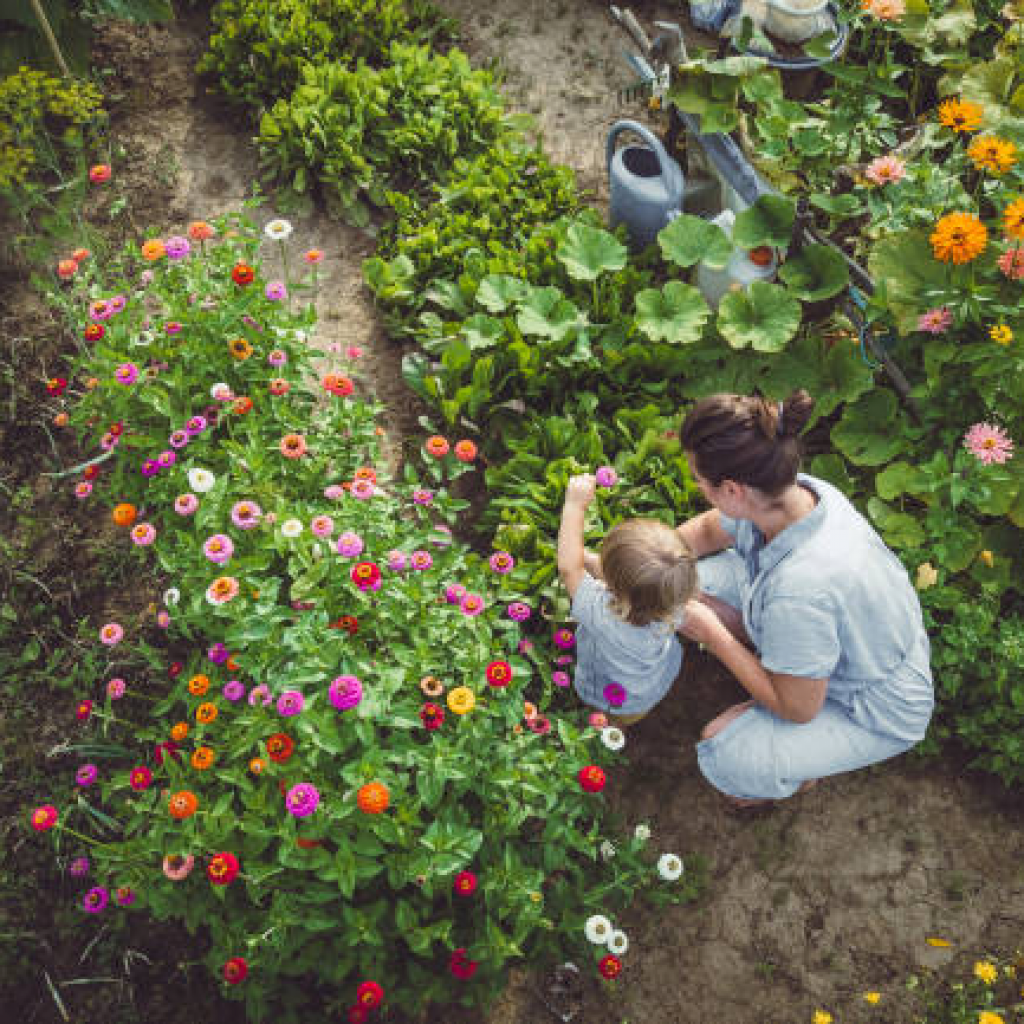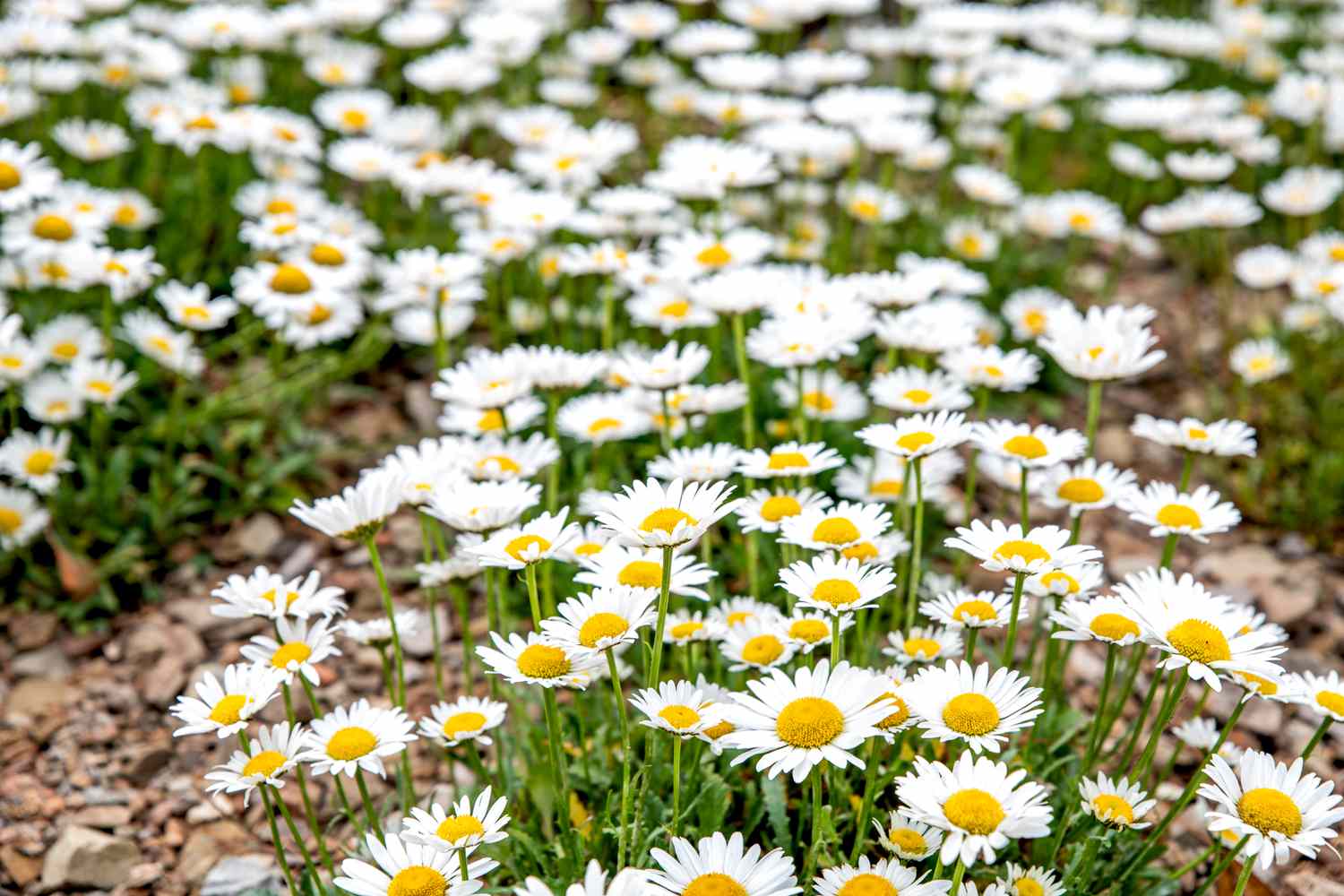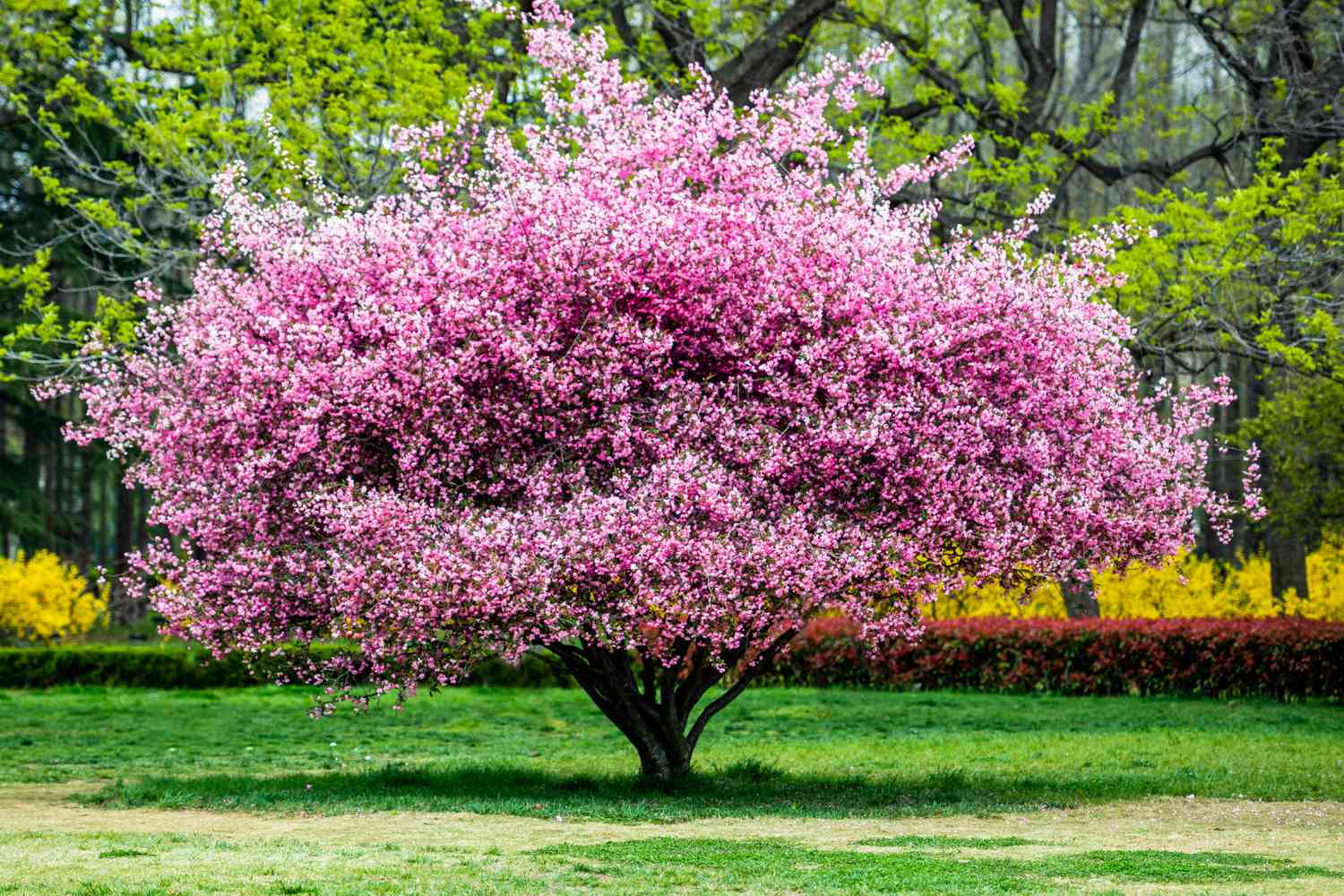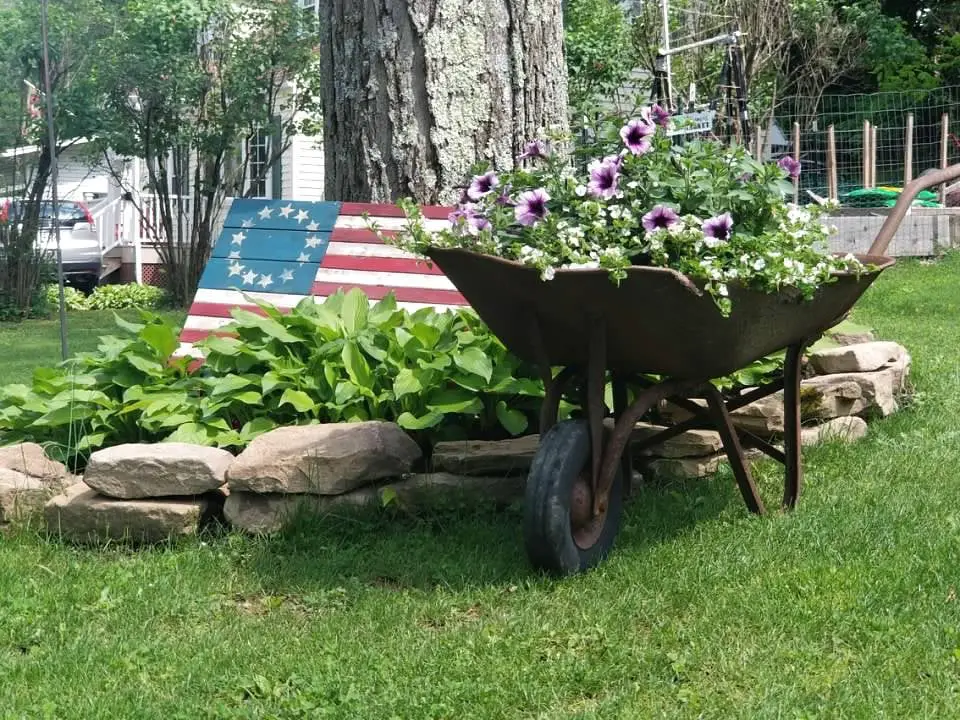**Herbaceous Harmony: 8 Best Flowering Herbs** Flowering herbs provide both beauty and utility in gardens. They offer vibrant colors and aromatic scents.
Flowering herbs are a delightful addition to any garden. These plants not only enhance the visual appeal but also serve various culinary and medicinal purposes. Many flowering herbs attract beneficial insects, promoting a healthy garden ecosystem. Popular choices include lavender, rosemary, and chamomile, each bringing unique benefits.
Lavender, for instance, adds a calming fragrance and can be used in teas. Rosemary offers flavorful sprigs for cooking, while chamomile’s blossoms make soothing teas. Growing these herbs is relatively simple, requiring minimal maintenance. They thrive in well-drained soil and sunny spots, making them ideal for both novice and experienced gardeners. Adding flowering herbs to your garden ensures a vibrant and functional outdoor space.
Lavender
Lavender is a beautiful and versatile flowering herb. It is known for its soothing fragrance and stunning purple blooms. This herb is perfect for gardens, adding both color and aroma. Lavender is also easy to grow and requires minimal maintenance.
Planting Tips
Lavender thrives in sunny locations with well-drained soil. It prefers a slightly alkaline soil pH.
- Plant lavender in the spring after the last frost.
- Space the plants about 12-18 inches apart.
- Water the plants deeply but infrequently.
- Prune the plants in early spring to encourage growth.
Culinary And Medicinal Uses
Lavender is not just pretty; it’s also useful in the kitchen and medicine cabinet.
| Culinary Uses | Medicinal Uses |
|---|---|
| Lavender adds a unique flavor to baked goods. | Lavender oil can relieve stress and anxiety. |
| It can be used in teas and lemonades. | It helps with insomnia and improves sleep quality. |
| Lavender pairs well with savory dishes like roasted meats. | Lavender oil can soothe minor burns and insect bites. |

Credit: www.amazon.com
Chamomile
Chamomile is a gentle herb known for its soothing properties. Its daisy-like flowers have been cherished for centuries. Chamomile is a favorite in gardens and kitchens alike, offering both beauty and utility.
Growing Conditions
Chamomile thrives in full sunlight and well-drained soil. It prefers moderate watering, ensuring the soil remains slightly moist. This herb can be grown in gardens or pots, making it versatile for various spaces.
| Condition | Requirement |
|---|---|
| Sunlight | Full Sun |
| Soil | Well-drained |
| Watering | Moderate |
Uses In Teas And Remedies
Chamomile is popular in teas for its calming effects. A cup of chamomile tea before bed can help with sleep. The herb is also used in remedies for soothing skin and reducing inflammation.
- Calming Tea: Brew dried chamomile flowers for a relaxing drink.
- Skin Soother: Use chamomile-infused water to calm irritated skin.
- Anti-inflammatory: Chamomile can reduce swelling and redness.
Calendula
The cheerful Calendula, also known as pot marigold, adds vibrant color to gardens. This flowering herb is not only beautiful but also offers numerous health benefits. Its bright petals can be used in teas, salves, and even as a natural dye.
Soil And Sunlight Requirements
Calendula thrives in well-drained soil. It prefers loamy or sandy soils that are rich in organic matter. A pH level between 6.0 and 7.0 is ideal for optimal growth.
This herb loves the sun. It requires at least 6 hours of direct sunlight daily. Partial shade is acceptable but may reduce flowering.
| Requirement | Details |
|---|---|
| Soil Type | Loamy or sandy |
| Soil pH | 6.0 to 7.0 |
| Sunlight | At least 6 hours of direct sunlight |
Healing Properties
Calendula is renowned for its healing properties. Its petals contain powerful antioxidants that promote skin health. Calendula is often used in creams and ointments to treat minor wounds and irritations.
The herb also has anti-inflammatory and antibacterial properties. It helps soothe eczema, dermatitis, and other skin conditions. Drinking Calendula tea can aid in digestion and reduce inflammation in the gut.
- Promotes skin health
- Soothes minor wounds and irritations
- Anti-inflammatory and antibacterial properties
- Aids digestion
Calendula is a versatile herb. It offers both beauty and health benefits. Make sure to add this sunshine herb to your garden.
Echinacea
Echinacea, often called coneflower, is a favorite among gardeners. This vibrant herb not only adds beauty to gardens but also offers numerous health benefits. Its stunning flowers attract pollinators, making it a valuable addition to any garden.
Best Practices For Cultivation
Growing Echinacea is easy if you follow these simple steps:
- Soil: Well-drained soil is crucial.
- Sunlight: Full sun is preferred, though partial shade is acceptable.
- Watering: Water regularly but avoid waterlogging.
- Spacing: Space plants about 18 inches apart.
Plant seeds in early spring or late fall. Mulch around the plants to retain moisture and control weeds. Deadhead spent flowers to encourage more blooms.
Immune-boosting Benefits
Echinacea is renowned for its immune-boosting properties. The herb contains compounds that enhance the body’s immune response. These include:
- Alkylamides
- Glycoproteins
- Polysaccharides
Many people use Echinacea to reduce the duration of colds. It is also believed to fight infections and promote overall wellness.
| Benefit | Description |
|---|---|
| Cold Relief | Reduces symptoms and duration of colds. |
| Immune Support | Strengthens the body’s natural defenses. |
| Anti-inflammatory | Helps reduce inflammation in the body. |
Consider adding Echinacea to your garden for both its beauty and health benefits.
Rosemary
Rosemary is a versatile herb known for its aromatic leaves and beautiful flowers. This evergreen plant can enhance both your garden’s aesthetic and your culinary creations. Let’s dive into its care requirements and culinary uses.
Plant Care
Rosemary thrives in well-drained soil and plenty of sunlight. It requires at least six hours of direct sunlight daily. Water it sparingly, as overwatering can cause root rot.
Pruning is essential for rosemary’s growth. Trim the plant regularly to encourage new growth and prevent it from becoming woody. Use sharp, clean shears for best results.
Rosemary can be grown indoors or outdoors. If growing indoors, place it near a south-facing window. Ensure the pot has drainage holes to avoid waterlogging.
| Care Aspect | Requirements |
|---|---|
| Soil | Well-drained |
| Sunlight | 6+ hours of direct sunlight |
| Watering | Sparingly |
| Pruning | Regularly |
| Location | Indoors/Outdoors |
Culinary Applications
Rosemary is a staple in many kitchens. Its leaves add flavor to a variety of dishes. From meats to vegetables, rosemary enhances the taste of numerous recipes.
Use fresh or dried rosemary in your cooking. Fresh rosemary has a stronger flavor, while dried rosemary is more concentrated.
- Roasted Meats: Rub rosemary on chicken, lamb, or beef for a savory taste.
- Vegetables: Sprinkle rosemary on roasted potatoes or carrots.
- Breads: Add rosemary to bread dough for an aromatic loaf.
- Soups and Stews: Use rosemary to enhance the flavor of broths and stews.
Store fresh rosemary in the refrigerator. Wrap it in a damp paper towel and place it in a plastic bag.
For dried rosemary, keep it in an airtight container. Store it in a cool, dark place to retain its flavor.

Credit: www.amazon.com
Thyme
Thyme is a fragrant herb that adds flavor and beauty to your garden. It’s easy to grow and versatile in cooking. This herb is a must-have for every herb lover.
Growing Techniques
Thyme thrives in well-drained soil and full sunlight. Plant thyme in a sunny spot for the best results. Use sandy or loamy soil to help with drainage. Water thyme sparingly to avoid root rot.
- Planting: Start with seeds or cuttings.
- Soil: Well-drained, sandy, or loamy soil.
- Sunlight: Full sun, at least 6 hours daily.
- Watering: Water sparingly.
- Spacing: Space plants 12-24 inches apart.
Thyme grows well in containers or garden beds. Prune regularly to keep it bushy. Harvest leaves as needed for cooking.
Versatility In Cooking
Thyme adds a delightful flavor to many dishes. It pairs well with meat, vegetables, and soups. You can use fresh or dried thyme in your recipes.
| Dish | Use of Thyme |
|---|---|
| Roasted Chicken | Sprinkle thyme leaves on the chicken. |
| Vegetable Soup | Add a few sprigs for extra flavor. |
| Grilled Vegetables | Mix thyme with olive oil and brush on veggies. |
Thyme is also a key ingredient in many spice blends. For example, it is used in Herbes de Provence and Italian seasoning. Add thyme to your spice rack for more flavorful meals.
Borage
Borage, also known as starflower, is a delightful herb with vibrant blue flowers. This ancient herb has been cherished for its culinary and medicinal properties. Its bright blossoms and cucumber-like flavor make it a must-have in any herb garden.
Ideal Growing Conditions
Borage thrives in full sun and well-drained soil. It is a hardy plant that can withstand various conditions. Plant borage seeds in early spring for the best results.
| Condition | Requirement |
|---|---|
| Soil Type | Well-drained, loamy |
| Sunlight | Full sun |
| Watering | Moderate |
| Temperature | 60-75°F (15-24°C) |
Ensure the soil is kept moist but not waterlogged. Borage can grow up to 2-3 feet tall, so give it space.
Uses In Salads And Garnishes
Borage leaves and flowers add a refreshing taste to salads. The leaves have a mild cucumber flavor, perfect for summer dishes.
- Add fresh leaves to a green salad.
- Use flowers as an edible garnish.
- Mix with yogurt or dips for a unique twist.
The bright blue flowers are also used to decorate cocktails. Freeze them in ice cubes for a stunning effect.
Try these simple recipes to enjoy borage:
- Chop leaves finely and mix with cream cheese.
- Add borage flowers to a fruit salad for color.
Incorporating borage into your meals is easy and rewarding. Its unique flavor and visual appeal make it a favorite among chefs and home cooks alike.

Credit: www.fivestarlandscape.com
Sage
Sage is a versatile herb known for its aromatic leaves. It offers both culinary and medicinal benefits. This hardy herb is also easy to grow in various climates.
Cultivation Tips
To grow sage successfully, follow these simple steps:
- Plant sage in well-drained soil with a pH of 6.0 to 7.0.
- Ensure the location gets full sun for at least 6 hours a day.
- Water the plant deeply but infrequently, allowing the soil to dry out between waterings.
- Space plants about 18 to 24 inches apart to allow good air circulation.
- Prune sage regularly to encourage healthy growth and prevent it from becoming woody.
Medicinal And Culinary Uses
Sage is a powerhouse of medicinal and culinary applications:
- Sage can help with sore throats and digestive issues.
- It has anti-inflammatory properties that can alleviate skin irritations.
- Use sage tea to reduce menopausal symptoms and improve mood.
- Sage adds a robust flavor to meats, especially poultry and pork.
- It’s essential in stuffing recipes and pairs well with onions and garlic.
- Sage butter can be a delicious topping for pasta or roasted vegetables.
| Attribute | Description |
|---|---|
| Soil Type | Well-drained |
| Sun Exposure | Full Sun |
| Watering | Deep but infrequent |
| Spacing | 18-24 inches |
Frequently Asked Questions
What Are The Best Flowering Herbs?
The best flowering herbs include lavender, chamomile, and calendula. These herbs are easy to grow. They also have various uses.
How Do I Grow Flowering Herbs?
Growing flowering herbs requires sunlight, well-drained soil, and regular watering. Plant them in a sunny spot. Ensure they have space to grow.
Can Flowering Herbs Be Used In Cooking?
Yes, many flowering herbs are edible. Herbs like lavender, chamomile, and rosemary add flavor to dishes. Use them fresh or dried.
Are Flowering Herbs Good For Pollinators?
Flowering herbs attract pollinators like bees and butterflies. Lavender and thyme are particularly attractive. They help support pollinator populations.
Conclusion
Embrace the beauty and benefits of flowering herbs in your garden. These eight herbs add color and fragrance. They also offer culinary and medicinal advantages. Start your herbaceous journey today. Enhance your garden’s allure while enjoying nature’s gifts. Happy gardening!





